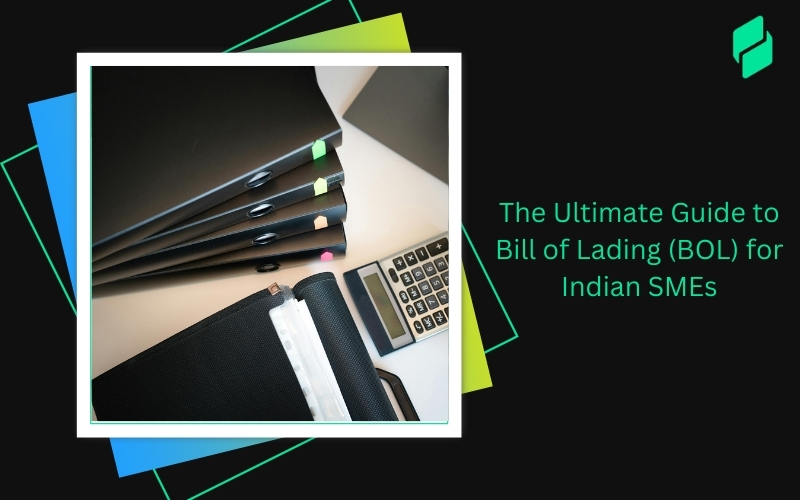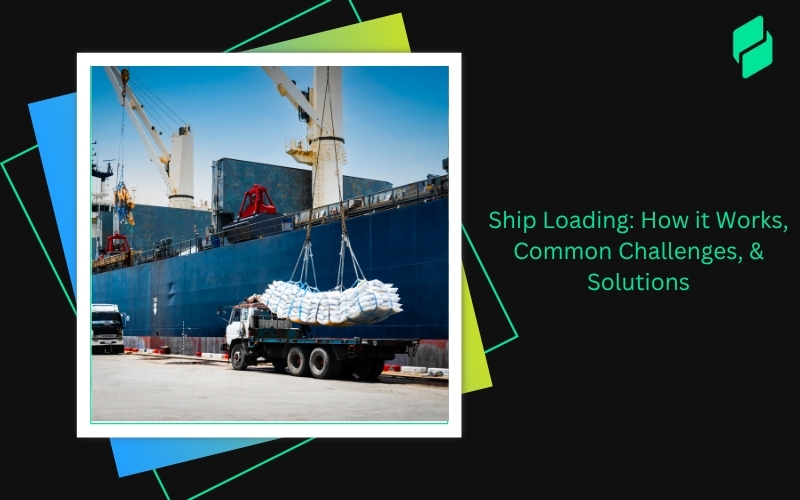Optimize your business: use unlimited savings with Pazago fulfilled now!
Get Started ->What exactly are FAS Incoterms, and why are they crucial for anyone involved in international shipping? These terms, "Free Alongside Ship," are essential to effectively navigating the complexities of global trade.
Whether you're just starting or are a seasoned exporter, understanding FAS incoterms can streamline your shipping processes.
This article will explain the meaning of FAS incoterms, how to use them, and their importance in ensuring smooth and efficient delivery of goods across borders.
Definition and Application of FAS Incoterms
FAS incoterms are designed explicitly for goods transported by sea or inland waterway. Under FAS, the seller's responsibility is to deliver the goods to a designated port alongside the vessel onto which the goods are to be loaded.
This term is particularly relevant to you if you're shipping large, bulk items where direct loading onto the ship isn't feasible. Understanding this term helps you manage logistics and costs effectively, ensuring a smoother transaction and transportation process.
Importance of FAS Incoterms in Global Trade
Why are FAS incoterms so critical in global trade? They demarcate responsibility and transfer risk from the seller to the buyer.
As someone involved in international shipping, knowing when your responsibility for the goods ends and the buyer's begins can help you avoid disputes and unexpected costs.
This clarity fosters more efficient and reliable trade relationships, essential for business growth in a global marketplace.
Restricted Use of FAS Incoterms
Remember, FAS Incoterms are only for use with sea transport or inland waterways. You'll need to use different terms if you're shipping by air or road. This helps keep things clear and ensures everyone knows which rules apply based on the shipping method.
Also Read: Understanding FCA Incoterms and Free Carrier Shipping Terms
Obligations under FAS Incoterms
Navigating international shipping? Understanding your responsibilities under FAS incoterms is crucial.
Here's a simplified table outlining the obligations of both sellers and buyers under FAS Incoterms:
Consider using Pazago Fulfilled to streamline your global trade processes, ensuring smooth and efficient management of your international transactions at every step.
Example: Shipping Ceramic Tiles from India to Italy
Seller (Company A): Based in Jaipur, India, the company manufactures ceramic tiles.
Buyer (Company B): The building materials are distributed in Milan, Italy.
Key Steps Under FAS Incoterms
- Preparation and Packaging: Company A packs the tiles securely and prepares all necessary shipping documents.
- Transport to the Port: Company A arranges and pays to transport the tiles from their factory in Jaipur to the port of Mumbai.
- Export Formalities: Company A handles export licenses and completes customs formalities in India.
- Delivery Alongside the Ship: Company A delivers the tiles right next to the ship at the port of Mumbai and provides proof of this delivery.
- Loading the Ship: Company B pays and arranges for the tiles to be loaded onto the ship.
- Sea Transport: Company B handles and pays for the shipping from Mumbai to Genoa, Italy.
- Arrival and Unloading: Company B manages and pays to unload the tiles at the port of Genoa.
- Import Formalities: Company B handles import duties and customs clearance in Italy.
- Transport to Final Destination: Company B arranges the final transport of the tiles to their warehouse in Milan.
This example simplifies FAS Incoterms in action. For detailed insights and optimizations tailored to your shipping needs, Pazago offers a granular view into managing international shipments efficiently.
Also Read: Understanding Ex Works (EXW) Incoterm in International Trade
Transfer of Risk in FAS Incoterms
Have you ever shipped goods across the sea and wondered precisely when your responsibility for them ends and the buyers' begins? Knowing this precise moment under FAS incoterms in international shipping can save you from unexpected risks and liabilities.
Let’s break down when and how the risk transfers from the seller to the buyer.
Seller's Liability Extends Until the Goods Are Alongside the Ship
As a seller, your responsibility includes everything up to delivering the goods right next to the ship at the designated port. This means you handle all the preparations, from packaging to transport, and even the customs clearance needed for export.
But your liability ends once your goods are safely alongside the ship and ready to be loaded.
The point at Which Risk Shifts from the Seller to the Buyer
So, when does this crucial shift happen? The moment your goods are placed alongside the ship at the port of shipment, the risk transfers from you, the seller, to the buyer.
This is a pivotal point under FAS incoterms because it marks where responsibility for the goods, including their safety, shifts entirely to the buyer.
As a seller, once you’ve delivered the goods to the designated spot next to the ship, your risk concerning these goods ceases.
Buyer's Continued Risk and Responsibility After the Designated Port
From this point onward, the buyer takes over all risks and responsibilities. This includes loading the goods onto the ship and all subsequent transportation to the final destination, whether by sea or other means.
The buyer also handles additional costs and responsibilities, such as import customs clearance, payment of import duties, and arranging further transportation within the destination country.
Understanding the transfer of risk is crucial. Pazago’s suite of products can help demystify these moments, ensuring you're always informed and prepared.
Also Read: Understanding Delivered Duty Unpaid (DDU): Definition, Meaning and Differences in Shipping Terms
FAS Incoterms Insurance
While FAS incoterms don't require insurance, it's wise to include it to protect against potential losses after goods are placed alongside the ship, where the seller's risk ends and the buyer's begins.
Opting for comprehensive coverage that spans the entire shipping journey from the seller’s warehouse to your doorstep ensures every phase is protected.
Specifying who arranges the insurance and what it covers within the sales contract is crucial to avoid confusion and ensure both parties are on the same page. Including these details enhances security and trust in international trade deals.
Ensure your goods' safety from start to finish. Choose Pazago for comprehensive insurance that covers your entire shipping journey.
Also Read: Comprehensive Guide On Marine Insurance: Clause, Coverage
Challenges and Considerations for FAS Incoterms
Navigating the complexities of international shipping requires a keen understanding of the terms involved, especially if you're using FAS Incoterms.
Let's explore why FAS might not be the best fit for every situation and look at some alternatives that could streamline your shipping process.
Unsuitability for Containerized Cargo
FAS incoterms typically require the seller to place goods alongside the ship at a designated port, which works well for bulk or oversized cargo.
However, containerized cargo can present challenges under FAS because these goods often require specific handling facilities that might not be available at the designated delivery point. This can lead to logistical difficulties and additional costs.
Better Suited for Non-Containerized Cargo
Given the challenges with containerized goods, FAS is more appropriate for non-containerized cargo. This includes large machinery or bulk materials that can be loaded directly beside the vessel. FAS incoterms might be a straightforward solution if your shipments contain such items.
Direct Loading Next to Shipping Vessels
A key aspect of FAS involves directly loading goods next to the vessel. This method is ideal for shipments easily transferred into the ship’s hold without extensive handling.
Navigating the challenges of FAS Incoterms requires expertise and support. Discover how Pazago’s solutions can streamline your shipping process, even in the face of such complexities.
Also Read: Calculating Costs for Oversize Load Shipping and Freight Rates
When to Use FAS Incoterms
Choosing the correct shipping terms is pivotal in international trade, especially ensuring cost-effectiveness and efficiency. Here are vital scenarios where using FAS (Free Alongside Ship) incoterms could be highly beneficial:
1. Suitable Scenarios for Using FAS
FAS is ideal when the seller can deliver the goods directly next to the ship at the designated port, making the process more straightforward, particularly for specific types of cargo.
2. Direct Access to the Ship for Loading Bulk Cargo
FAS is advantageous if you ship bulk commodities like grains, coal, or minerals. It facilitates direct loading alongside the vessel, reducing handling and potential damage, thereby enhancing efficiency and safety.
3. Oversized or Difficult to Handle Goods
Consider heavy machinery or large equipment for oversized items or goods that could be more convenient to manage. FAS minimizes complexity. The seller's responsibility ends once the goods are placed beside the ship, simplifying logistics for difficult-to-handle shipments.
4. Buyer's Preference to Control Shipping from the Port
FAS is a strategic choice if the buyer wishes to take charge of the shipping process from the port onwards. This term allows the buyer to oversee the loading and subsequent transport, tailoring the handling and logistics to their specific needs.
5. Provides Clarity in Cost Allocation Between Seller and Buyer
With FAS, it's clear-cut: the seller handles all costs up to delivering goods alongside the vessel. Beyond this point, the buyer assumes responsibility for all subsequent expenses. This clarity helps both parties manage their budgets more effectively.
6. Allows Buyer to Ensure Proper Loading and Handling of Cargo
FAS allows buyers to directly oversee and control the loading and handling of the cargo, ensuring that it adheres to their specific standards and requirements. This is crucial for delicate or high-value items that require special attention.
Deciding when to use FAS Incoterms is strategic. Pazago's platform could offer the insights and operational support needed to make these decisions more straightforward.
Difference Between FAS and FOB Incoterms
Also Read: FOB vs CIF: What's The Difference? Which Is better?
Conclusion
Choosing the right incoterm is about more than complying with regulatory requirements—it’s about making strategic decisions that align with your business goals. Have you assessed how FAS incoterms fit into your overall shipping strategy? Or perhaps it's time to explore other options that better suit your needs.
Navigating international trade can seem daunting, but with the proper knowledge and tools, like FAS incoterms, you’re well-equipped to manage the risks and reap the rewards.
So, why not review your current shipping strategies and see if FAS Incoterms could enhance your trade operations? After all, every successful voyage begins with a well-planned route.


.png)








